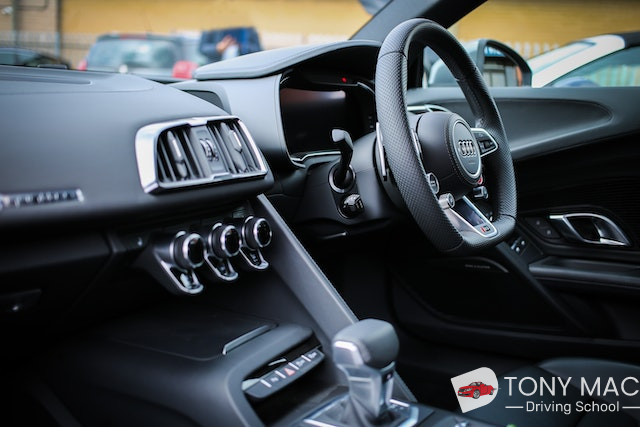Five Practical Driving Test Lessons From The Professionals

Understanding the Practical Driving Test: A Comprehensive Guide
Navigating the road to acquiring a driver's license can be a difficult job for numerous. Among the numerous steps included, the practical driving test stands as a vital milestone. Mock Driving Test assesses a person's ability to run a vehicle securely and competently in real-world conditions. In this article, we will explore the information of the practical driving test, from its structure and purpose to preparation tips and typical FAQs.
What is a Practical Driving Test?
A practical driving test is an evaluation designed to evaluate a candidate's driving skills and knowledge of traffic guidelines and safety protocols. The test normally follows a set format set out by the governing body of the area-- such as the Department of Motor Vehicles (DMV) in the United States or the Driver and Vehicle Standards Agency (DVSA) in the UK-- guaranteeing that all prospects meet an uniform standard of driving proficiency.
Purpose of the Practical Driving Test
The main goal of the practical driving test is to make sure that new drivers have the skills needed for safe driving. Here are some essential functions:
- Safety: To ensure that all chauffeurs can operate a vehicle securely and abide by traffic laws.
- Assessment of Skills: To evaluate a prospect's capability to handle a variety of driving situations, consisting of urban, rural, and highway driving.
- License Qualification: To identify if the candidate is ready to be accredited to drive individually.
Structure of the Practical Driving Test
The structure of the driving test can differ depending on the location, but it generally consists of the following components:
1. Pre-Test Checklist
Candidates are frequently needed to:
- Present Valid Documents: This includes learner's permit, recognition, and any other necessary forms.
- Vehicle Inspection: Some tests include a vehicle safety check where the examiner will ask about the automobile's safety functions (e.g., headlights, brakes, tires).
2. On-Road Driving Skills Assessment
The main part of the practical driving test normally consists of:
- Starting the Vehicle: Safety checks before entering the highway.
- Basic Maneuvers: Demonstrating important skills such as turning, stopping, and parking.
- Traffic Situations: Navigating different driving circumstances, consisting of merging, lane modifications, and performing right-of-way rules.
- Complex Maneuvers: Performing parallel parking, three-point turns, and reversing securely.
3. Scoring Criteria
Examiners observe prospects on various requirements, including but not limited to:
- Adherence to traffic signals and signs
- Use of mirrors and awareness of surroundings
- Lane discipline
- Handling of the vehicle under different conditions (e.g., wet roads)
Sample Evaluation Table
| Competency | Points Possible | Points Scored |
|---|---|---|
| Effective use of mirrors | 10 | |
| Lane changes | 15 | |
| Complying with speed limits | 10 | |
| Parking precision | 20 | |
| Reaction to signals | 15 | |
| Overall | 70 |
Preparing for the Practical Driving Test
Preparation is the essential to passing the practical driving test. Prospects frequently gain from a mix of practice, education, and planning. Here are some effective preparation ideas:
1. Take Professional Lessons
- Register in Driving School: Professional trainers can provide valuable insights and training tailored to the practical driving test.
2. Practice Regularly
- Driving in Various Conditions: Acquaint yourself with different driving environments such as highways, city streets, and rural locations.
3. Mock Tests
- Replicate the Test Conditions: Conducting mock tests with pals, household, or a driving instructor can alleviate test-day anxiety.
4. Evaluation Road Rules
- Study Traffic Laws: Familiarize yourself with local traffic codes, road signs, and driving regulations.
5. Car Familiarity
- Practice with Your Test Vehicle: Make sure you are comfortable with the automobile you will be utilizing for the test.
Common FAQs About the Practical Driving Test
Q1: How long does the practical driving test last?
A1: The period of the practical driving test typically ranges from 20 to 40 minutes, depending upon local policies and the intricacy of the route.
Q2: What should I bring to the test?
A2: Candidates must bring their learner's authorization, identification, evidence of insurance and registration for the test car, and any required documentation defined by the licensing authority.
Q3: What occurs if I fail the test?
A3: Most areas enable prospects to retake the practical driving test. Generally, a waiting duration is imposed, which may vary by jurisdiction.
Q4: Can I utilize a backup cam during the test?
A4: While the guidelines vary per place, usually, using backup cams is enabled, however it's essential to also examine over your shoulder.
Q5: Is the driving test simple?
A5: The difficulty of the driving test depends on the individual's convenience level and readiness. Many discover it workable with sufficient practice.
The practical driving test plays an important function in a driver's education journey. By understanding the structure, preparing aptly, and recognizing with the expectations, prospects can increase their confidence and probability of passing. This test not only makes sure that new chauffeurs can operating a lorry safely however also promotes a culture of accountable driving on the roadways. By resolving each element thoughtfully, potential chauffeurs can turn their anxiety into assurance as they approach this significant milestone.

